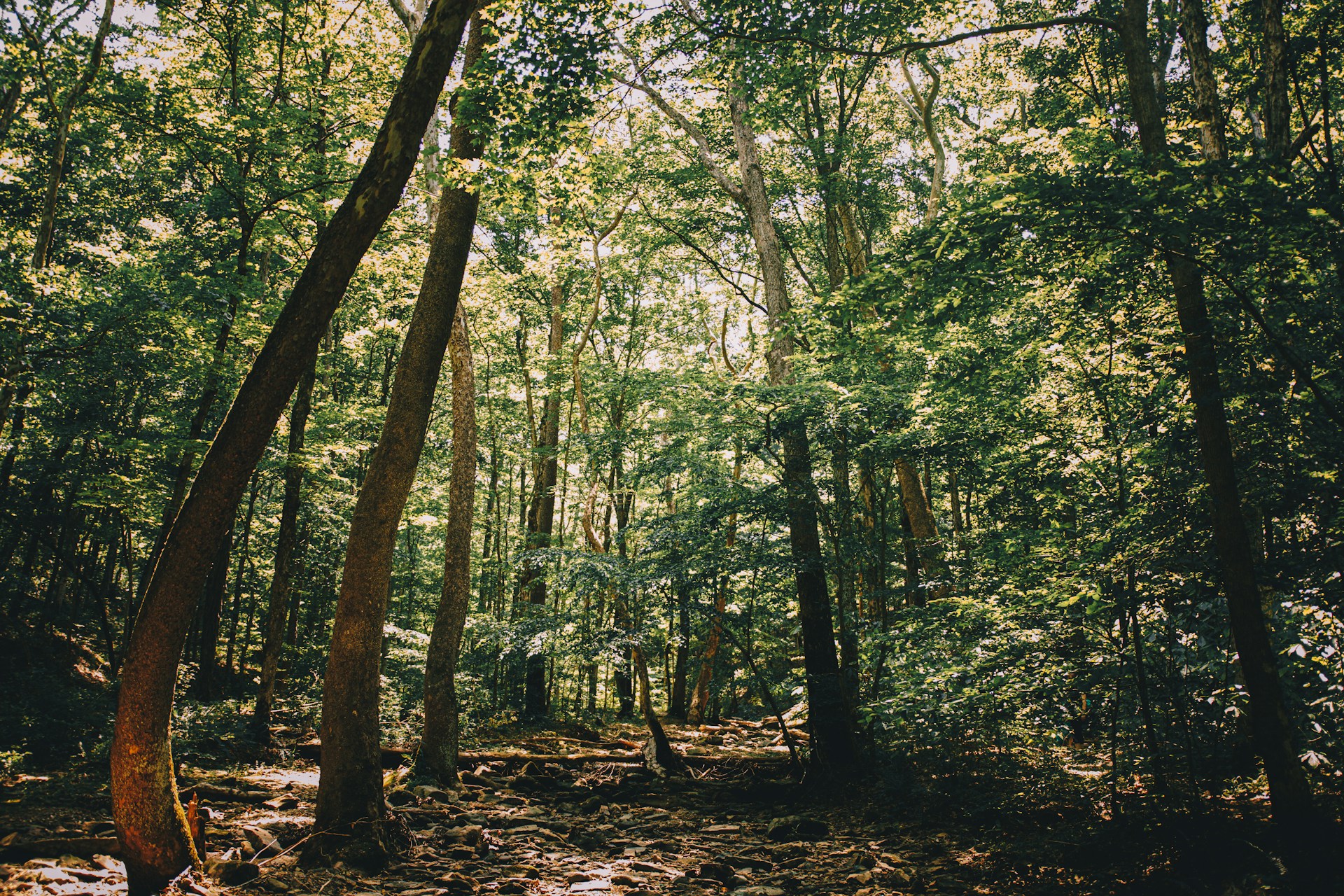Looking for the best places to hike near Chicago? This is the guide for you!
I spent most of my life in the Midwest, not realizing there was anything scenic to do!
Once I got off the beaten path and explored a bit, I realized there were plenty of hiking trails.
Consider the iconic 606 Trail Chicago, an elevated trail offering stunning urban views and artwork, perfect for a leisurely hike or a vigorous run.
Wanting to get out of the city? Consider Starved Rock and Matthiessen State Parks.
They feature streaming waterfalls right in the middle of the Midwest!
Some of the best places to hike near Chicago are the 606 trail, Chicago Lakefront Trail, Chicago Riverwalk, Indiana Dunes, Illinois Beach State Park, Starved Rock State Park, Matthiessen State Park, Devils Lake State Park, and Shawnee National Forest.
Chicago Trails
1. 606 Trail Chicago

Starting Point: Wicker Park, Humboldt Park, Bucktown, or Logan Square
The 606 Trail, stretching for 2.7 miles, offers a unique urban escape for hikers, walkers, and bikers. I recommend spending 1 to 2 hours exploring this elevated path.
It’s one of my favorite ways to experience the city on a Chicago itinerary.
The 606 trail connects four vibrant Chicago neighborhoods, making it a great way to experience the city from a different perspective.
Along the way, you’ll encounter art installations, beautifully landscaped gardens, and spots to rest and people-watch.
The trail is open from 6 AM to 11 PM daily.
⭐Popular Chicago Hotels
2. Chicago Lakefront Trail
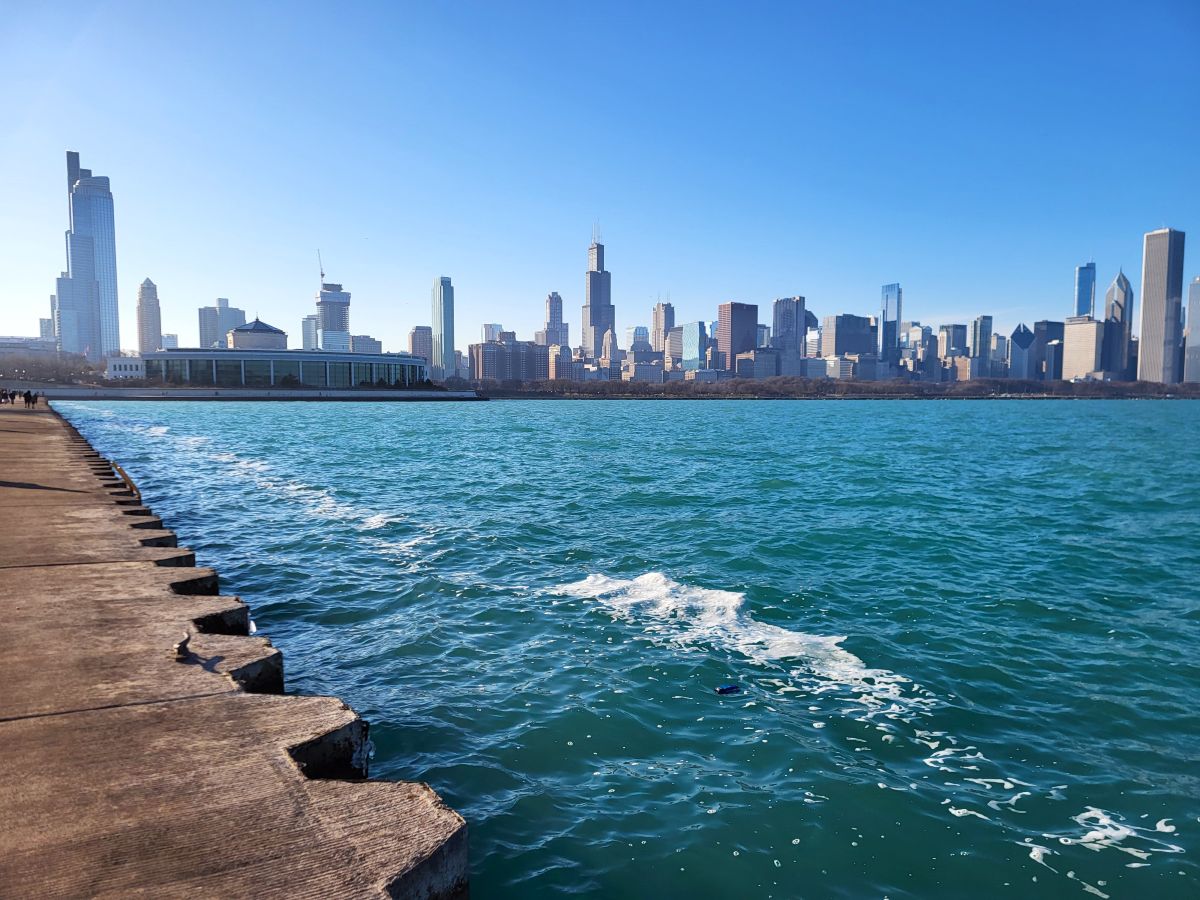
Starting Point: Ardmore Ave on Northside
Stretching for 18 miles along the edge of Lake Michigan, the Chicago Lakefront Trail provides a scenic route for hiking, walking, or biking.
Ideal for both casual walking or running, visitors usually spend an hour or two on the trail.
It is accessible year-round.
There are separate lanes for cyclists and pedestrians to use, ensuring a safe experience for everyone. The best places to stop along the trail are Lincoln Park, Navy Pier, and Museum Campus.
The panoramic views of the Chicago skyline and the tranquil waters of Lake Michigan make this one of my favorite Chicago walking trails!
3. Chicago Riverwalk
Starting Point: Sets of stairs along major intersections through Lake Michigan West to Lake Street.
The Chicago Riverwalk extends for 1.25 miles along the south bank of the Chicago River. It’s a unique pedestrian pathway right in the heart of downtown Chicago!
A leisurely walk along this path can take anywhere from 30 minutes to an hour.
Visitors can enjoy urban views, public art installations, and waterfront cafes.
The Riverwalk features guided tours, boat rentals, and seasonal activities.
Bonus: Chicago Riverwalk is filled with tons of photo opps, something I recommend on the ultimate girls weekend in Chicago.
Popular Chicago Tours
Trails Near Chicago
4. Indiana Dunes National Park
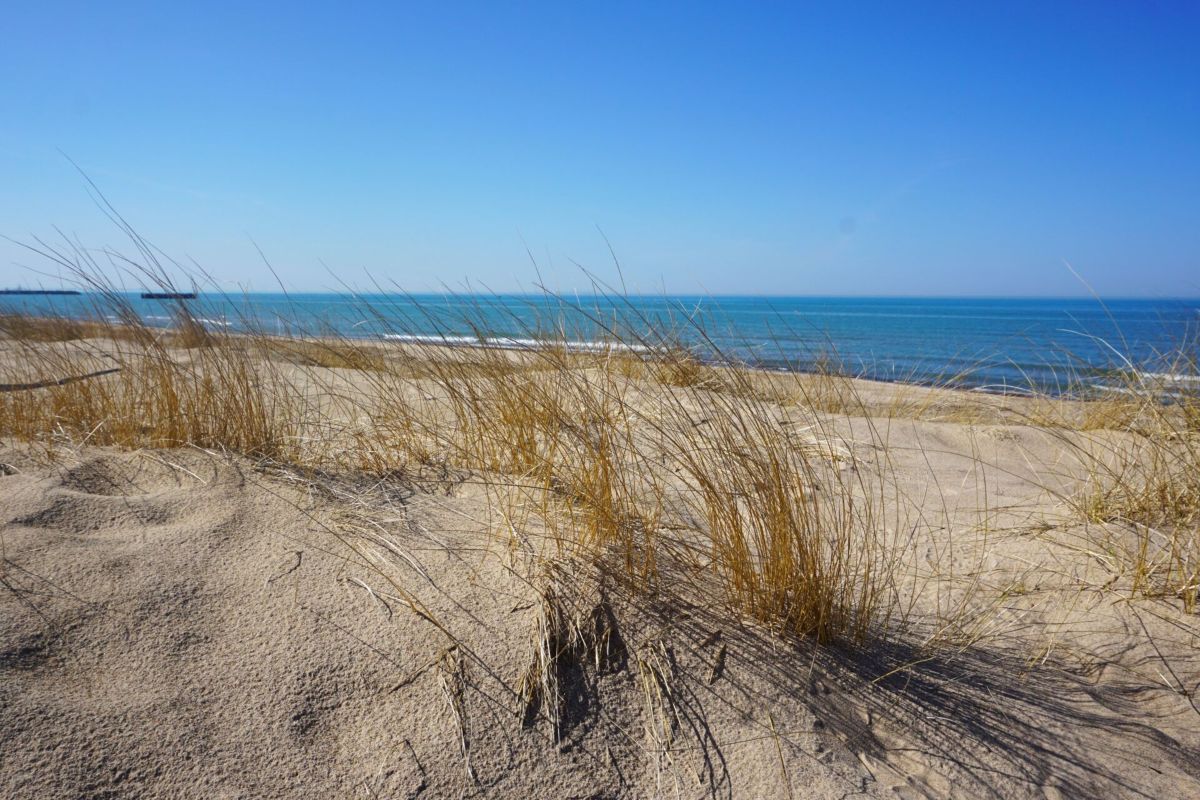
Distance from Chicago: 1 hour
Visiting Indiana Dunes National Park from Chicago is a straightforward trip. By car, it’s roughly a one-hour drive via I-94 East.
Public transportation is another option! The South Shore Line runs from Downtown Chicago to the Dunes Park Station, just a short distance from the park’s entrance.
Indiana Dunes features over 50 miles of trails, with the 3 Dune Challenge being among the most popular for its spectacular views.
Trail 9 offers a more moderate hike with stunning vistas of the dunes and Lake Michigan.
Plan to spend at least half a day exploring various trails and enjoying the natural beauty of the area.
Bonus: Indiana Dunes is also an amazing place to see Midwest fall foliage!
5. Illinois Beach State Park
Distance from Chicago: 1.5 hours
Illinois Beach State Park is approximately 1.5 hours from Chicago, accessible by car via I-94 W.
For those preferring public transportation, options include taking a train from Union Station to Zion, followed by a short taxi or bike ride to the park.
The state park spans over 4,000 acres along Lake Michigan’s shore.
Some of the best trails are Dunes Nature Preserve Trail and Dead River Trail.
Plan to spend at least half a day at Illinois Beach State Park.
6. Starved Rock State Park
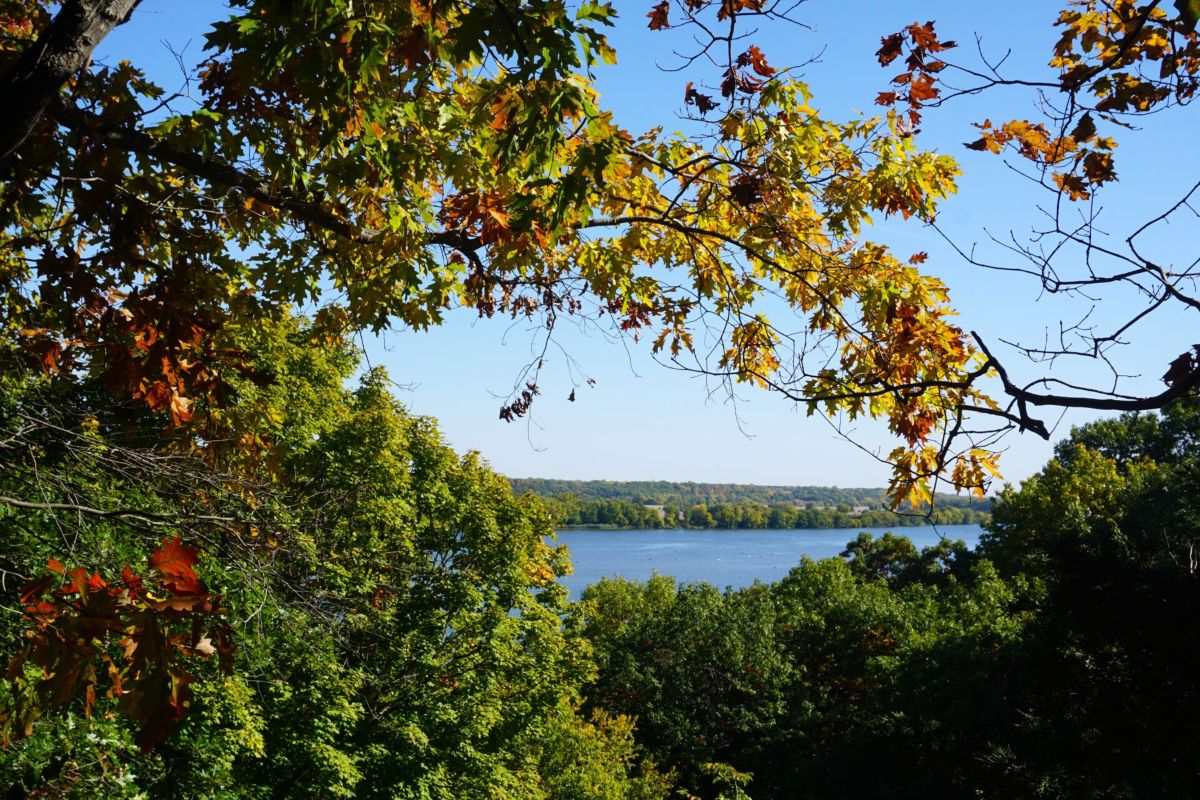
Distance from Chicago: 2 hours
Visiting Starved Rock State Park from Chicago is a straightforward trip, taking roughly 2 hours by car via I-55 S and I-80 W.
Once there, hikers shouldn’t miss the chance to explore trails leading to the stunning French Canyon, Wildcat Canyon with its seasonal waterfall, and the Lover’s Leap Overlook for panoramic views.
Spend at least a half-day at Starved Rock to enjoy the hiking experience!
Starved Rock also makes for a low-key Spring Break or Summer Vacation getaway.
⭐Popular Hotels Near Starved Rock
7. Matthiessen State Park

Distance from Chicago: 2 hours
Visiting Matthiessen State Park from Chicago is also an easy road trip, requiring a 2-hour drive southwest of Chicago.
The main roads to the park are via I-55 S and IL-178 S. There is no direct public transportation option.
Similar to Starved Rock, Matthiessen is known for its fascinating rock formations and cascading waterfalls.
Two of the best trails are the Dells Area and the River Area.
I recommend a half day or full day at Matthiessen to fully enjoy your trip (and make the most out of your drive there!)
Tip: It’s SUPER easy to combine with Starved Rock, only a 10-minute drive away!
This makes it one of the easiest Midwest road trips.
8. Devils Lake State Park

Distance from Chicago: 3.5 Hours
Visiting Devils Lake State Park from Chicago involves a roughly 3.5-hour drive, primarily via I-90 and US-12 W. Renting a car is the most viable way to access the park.
The top trails are East Bluff Trail and West Bluff Trail.
I recommend at least one full day to explore Devils Lake.
It’s also a perfect Midwest Weekend Trip to fully experience the natural beauty and serenity of Devils Lake State Park.
9. Shawnee National Forest
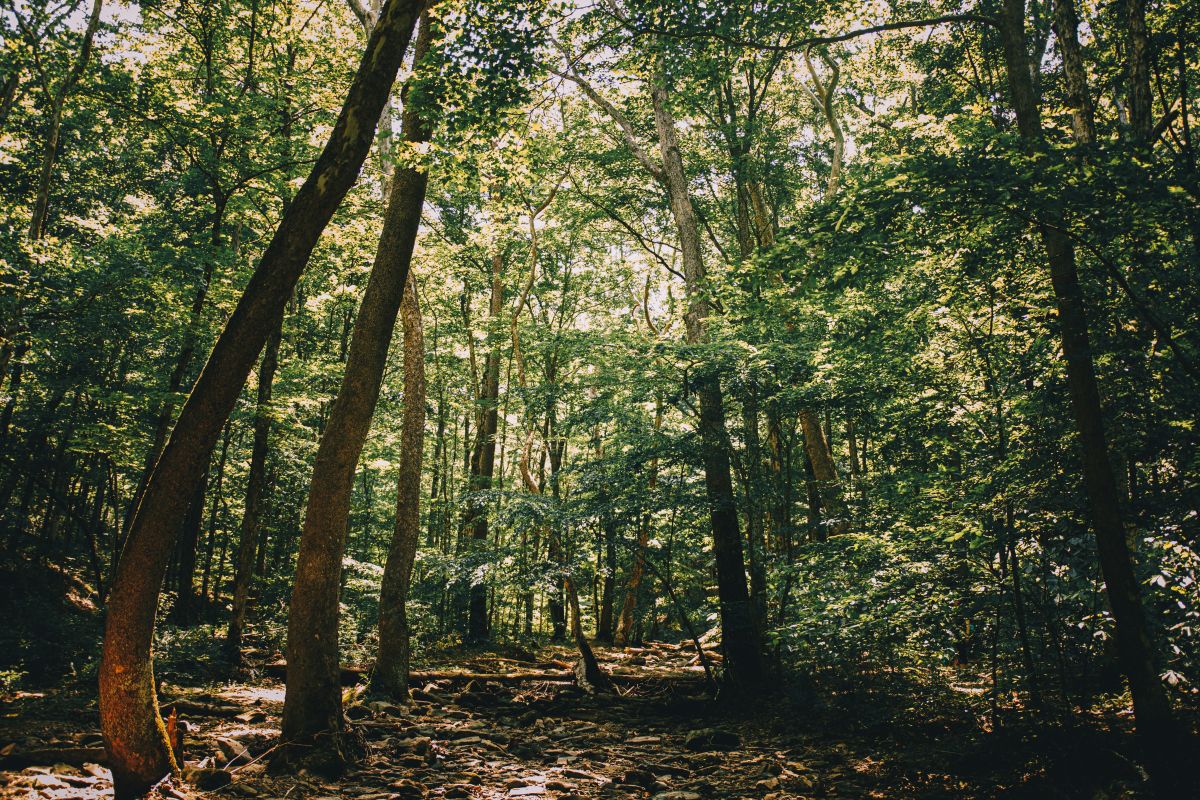
Distance from Chicago: 5 Hours
Driving south from Chicago to Shawnee National Forest takes approximately 5 hours by car.
There are no direct public transportation options.
Shawnee National Forest is known for some of the best Midwest hiking trails.
Some of Shawnee’s best trails include Garden of the Gods and Rim Rock Recreational Trail.
Given the extensive array of trails and the sheer size of the park, plan to spend a full weekend at Shawnee.
FAQ
Q: Do I need any special equipment for hiking these trails near Chicago?
A: For most trails mentioned, standard hiking gear is sufficient. This includes comfortable hiking shoes, water, snacks, and weather-appropriate clothing.
For more rugged trails like those in Devils Lake State Park or Starved Rock State Park, a hiking stick or trekking poles might be helpful.
Always check trail conditions and recommendations before heading out.
Q: Are pets allowed on these trails?
A: Pets are allowed in most outdoor areas, but they must be kept on a leash at all times.
It’s important to check the specific regulations of each park before you go, as policies can vary.
Always remember to bring supplies to clean up after your pet.
Q: What is the best time of year to go hiking near Chicago?
A: The best time for hiking near Chicago is from late spring to early fall when the weather is milder and the trails are less muddy.
However, many of the trails offer unique beauty in winter, provided you are prepared for the cold and potentially snow-covered paths.
Q: Is wild camping allowed in any of these areas?
A: Wild camping is generally not permitted in most of these parks, but several offer designated camping areas.
Always check regulations and obtain any necessary permits in advance.
Conclusion
From the 606 Trail’s urban charm to the natural wonders of Starved Rock State Park, there are more hiking options near Chicago than you might think at first!
Whether you’re seeking a short day trip or a weekend getaway, these hiking destinations near Chicago are sure to provide a scenic experience.

